It’s Cellar Season at Chehalem, which means things at the winery have quieted down, and most of the production team’s attention has turned to the barrel room and the art of winemaking. But for the vineyard crew, Cellar Season is one of the most important times of the year.
While on the surface things in the vineyard look dormant, the vineyard crew’s work for the season is as busy as ever. Starting early February, Chehalem’s Vineyard Crew focuses on pruning. Pruning is the most important day in that vine’s annual life cycle because it is setting the fruit yield for the whole year.
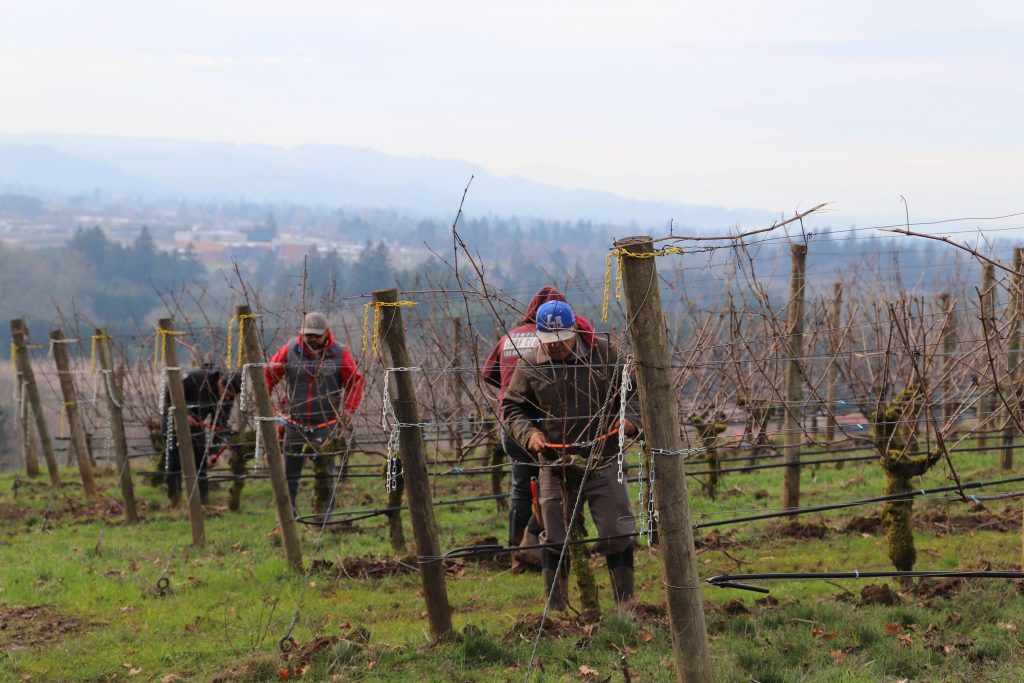
Vineyard Crews at Chehalem can generally cover up to 11 acres a day pruning during Cellar Season. (Location: Corral Creek Vineyard)
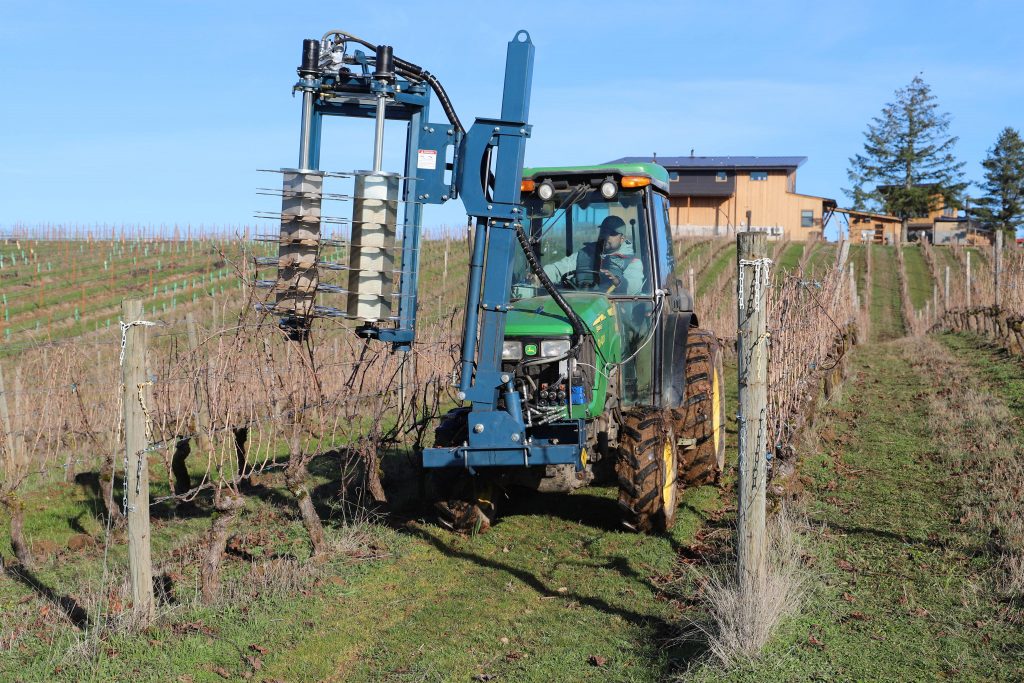
It starts with pre-pruning. Most of the vine pruning is done by hand, but to reduce the time and load on the crew a pre-pruner comes in and tops the height of the vine rows before the crews begin their 3 step process; pruning the vine, removing the brush, and then coming in to tip and tie the cane so it is ready for bud break in the spring. (Location: Ridgecrest Vineyard)
Pruning is difficult in that every vine requires something different to improve its architecture. It really is vine to vine, and it takes a lot of experience to train your eyes to see what each vine needs. The first time I tried pruning I was so nervous because I thought I was going to prune the wrong thing and permanently ruin the vine. But we’re talking about giving the vines a haircut, and making a pruning mistake is just like getting a bad haircut…you can’t mess them up, it will grow back. In some situations when the head of the vine has gotten too high after years of growth, we will come in with a chainsaw and cut the trunk down to lower the head height and it will still produce buds and create new shoots seemingly from nowhere.
There are two types of major pruning styles: Cane pruning and spur pruning. These two styles are used to create many different training systems. At Chehalem, we use three different types of training systems: Double Guyot (uses cane pruning), Double cordon (uses spur pruning), and Scott Henry (uses cane pruning).
Double Guyot (uses bilateral cane pruning): most all of our vineyards are trained in this way. Crews take two canes from last year’s growth and lay one cane or on each side in the form of a “T.” FUN FACT: vine “arms” are usually called shoots in the summer and canes once they lose their leaves and get woody/lignified.
Single or double cordon (uses spur pruning): it is single for one arm and double for two arms. The spur pruned vines have an arm or cordon that we keep every year and don’t cut off until it becomes too old/large and then we start over. We cut the shoots that come up from the arm just above the arm (two buds on each shoot are saved). The difference between spur pruned vines and cane pruned vines are the large arms that stay every year on spur pruned vines vs the smaller canes that are laid down each year with cane pruned vines.
Scott Henry (uses Quadrilateral Cane Pruning): – This type of training system was developed by Oregon grower and producer Scott Henry in his vineyards in the Umpqua Valley. The crew lay down four canes and train some shoots up, and some shoots down. The result: the fruit for each vine on this type of trellis system doubles.
After the vines have been pruned the brush gets pulled off the wires and laid in between the vine rows. Once weather permits, a tractor will come through and chop the wood up and return it to the soil to decompose in place. The nutrients will feed the vines and grow more shoots and the cycle continues.
Finally, crews work on vineyard clean-up and spring prep. The vineyard team can do a very preliminary crop estimation based on the number of buds left on each vine to create shoots. This is our very first look into the season. Now, we wait for the buds to break………
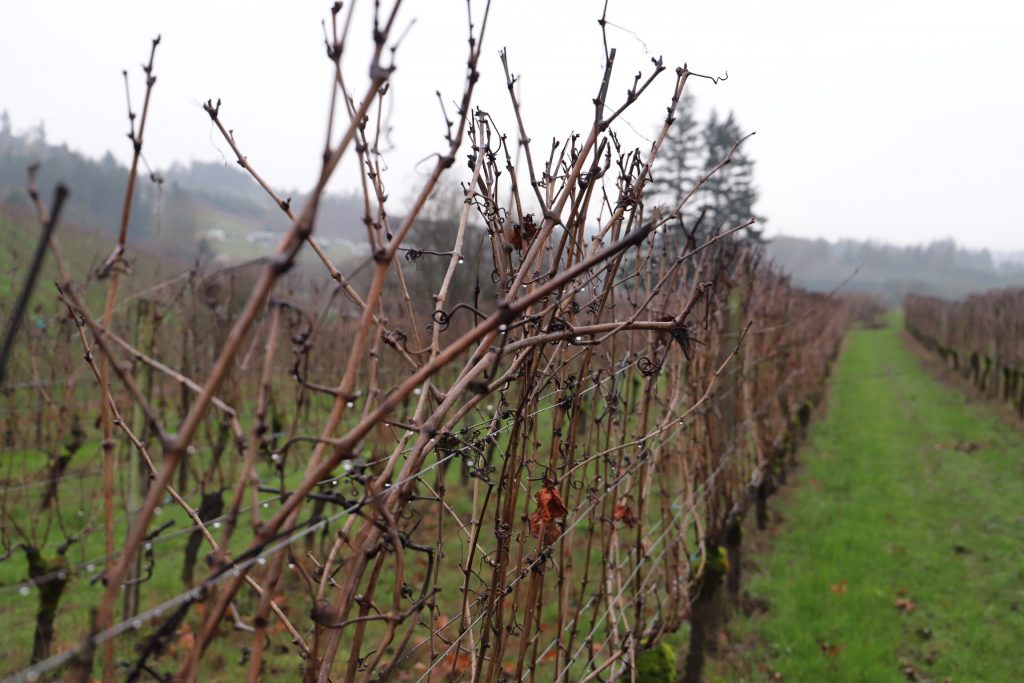
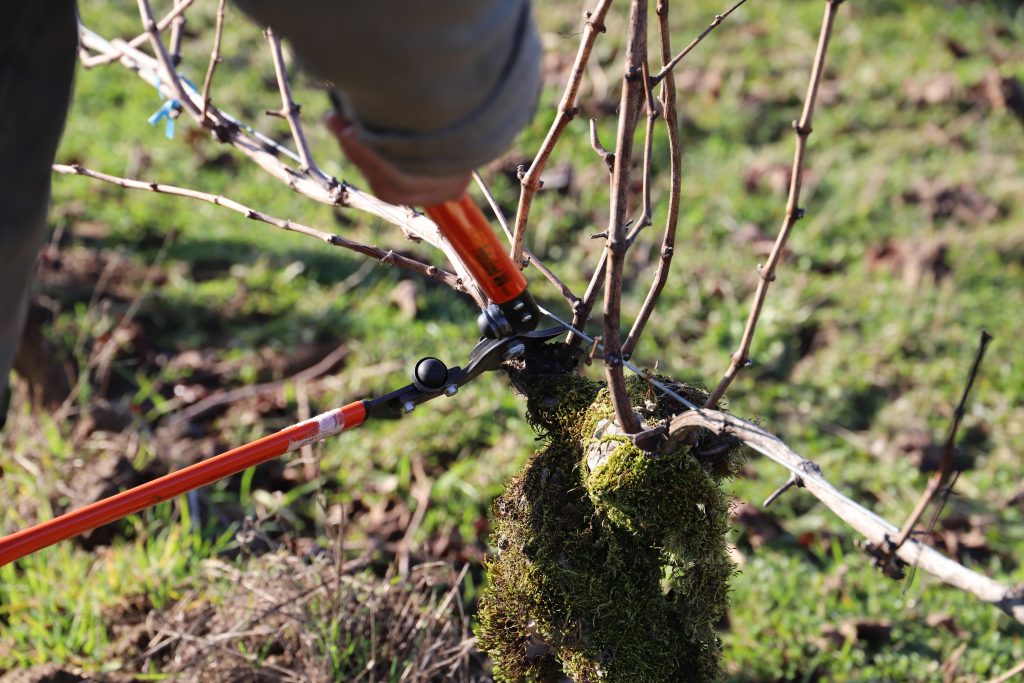
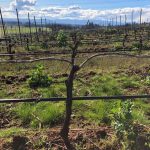
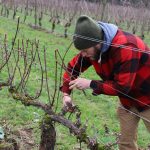
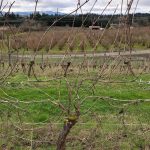
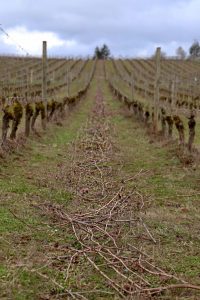
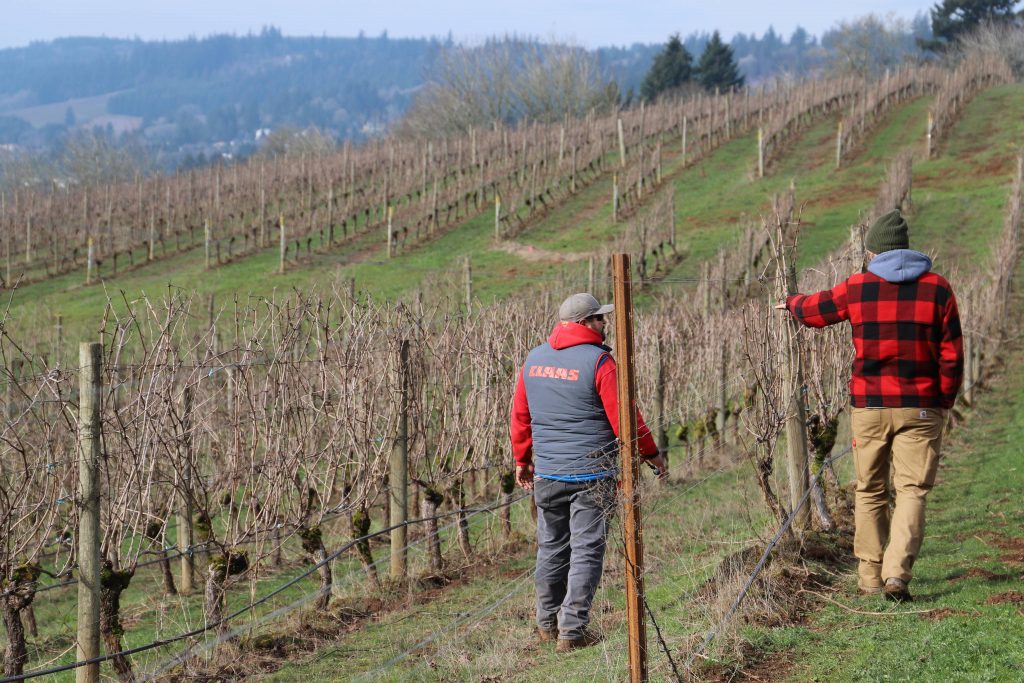
0 Comments
Leave A Comment